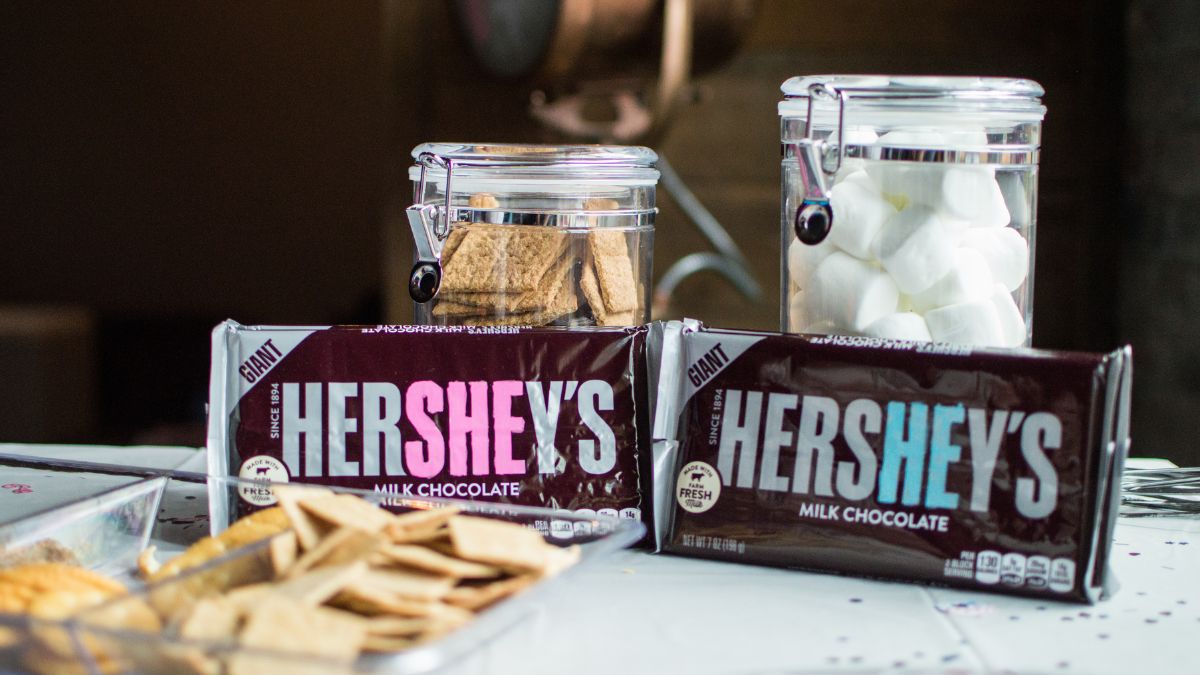
The world of confectionery is under the spotlight of market giants. Mondelez International, known for iconic brands like Oreo and Cadbury, is exploring the possibility of acquiring Hershey, the leader in chocolate in North America, according to recent reports from Bloomberg. If finalized, this acquisition could create one of the largest confectionery companies globally.
What does Mondelez’s potential acquisition of Hershey entail?
Mondelez’s strategic move aims to strengthen its position in the confectionery industry. Founded in 1894, Hershey generates most of its revenue in North America, with global net sales reaching $11.17 billion in 2023. In the same year, Mondelez reported $36 billion in revenue, with a strong presence in Europe and North America, according to Statista.
Both companies, leaders in their respective markets, share a focus on innovation and global expansion. This merger would not only expand Mondelez’s portfolio with brands like Reese’s and Hershey’s Kisses but also reinforce its dominance in categories such as chocolates and cookies.
What do we know so far about the negotiations?
According to Bloomberg, Mondelez has made a preliminary approach to evaluate the acquisition, but discussions are still in the early stages. There is no confirmation that these negotiations will result in a definitive agreement.
On Wall Street, the news had an immediate impact: Hershey’s shares rose by 17%, while Mondelez’s fell by 4%. This contrast reflects both the market’s expectation of the offer and the financial implications for Mondelez.
ALSO READ. Golden Globes 2025 nominations: Here is the complete list of nominees
Mondelez’s second attempt to acquire Hershey
Mondelez previously attempted to acquire Hershey in 2016, but its $23 billion offer was rejected. At the time, Hershey argued that the proposal did not reflect the company’s true value. Now, with a more competitive market and companies facing global challenges, the possibility of a new deal gains renewed relevance.
Mondelez and Hershey dominate the confectionery industry
Mondelez and Hershey have established themselves as industry leaders through diversification and innovation strategies.
Mondelez:
- Its revenue is distributed across key segments: cookies (49%), chocolates (30%), and gum/candy (12%).
- Owns global brands like Cadbury, Milka, and Toblerone.
- Operates in over 150 countries with a strong presence in Europe.
Hershey:
- Leads the U.S. market with 94% brand recognition.
- In 2023, allocated $605 million to advertising to boost sales.
- Has diversified its portfolio with products such as cookies, candies, and milkshakes.
Both companies have a strong reputation for sustainability and social responsibility, positioning them as leaders in their sectors.
What would Hershey’s acquisition mean?
The union of Mondelez and Hershey would create a colossal entity with unprecedented capabilities to dominate the global confectionery industry. This could result in:
- An expanded product portfolio.
- Greater influence in emerging markets.
- Increased investment capacity in innovation and sustainability.
However, it also raises questions about the impact on competition and potential regulatory challenges.
What do experts and the market say?
So far, neither Mondelez nor Hershey has issued official comments on the negotiations. However, analysts point out that such a transaction would require significant financial effort from Mondelez, whose market capitalization is around $84 billion, while Hershey is valued at $35 billion.
Additionally, consumers and business partners are closely monitoring how this potential merger might affect pricing and innovation in the industry.
Although the deal is far from confirmed, the mere consideration of this merger highlights Mondelez’s ambition to solidify its position as the ultimate market leader.
History of Hershey
Hershey was born in 1894 as a subsidiary of the Lancaster Caramel Company, founded by Milton S. Hershey in Pennsylvania. Over time, Milton realized that chocolate had much greater potential, and in 1900 he sold his caramel company to focus exclusively on chocolate production. This decision allowed him to launch the iconic milk chocolate bars that quickly became a symbol of quality and accessibility in the United States, marking the beginning of a company that would transcend generations.
Milton Hershey’s visionary spirit not only transformed the chocolate industry but also left a lasting impact on society. In 1909, he founded the Milton Hershey School, an institution dedicated to providing education and a home to underprivileged children, funded largely by the company’s profits. Additionally, he established a trust to protect and guide the company after his death, ensuring that his business and philanthropic legacy would continue to flourish. His commitment to social welfare remains a cornerstone of Hershey to this day.
With more than a century of history, Hershey has evolved from a small chocolate company in Pennsylvania into a global corporation listed on the New York Stock Exchange. Through its trust, it maintains a unique structure that combines traditional values with modern market strategies. Today, the company not only produces chocolates but also a wide range of products, including cookies and beverages, cementing its position as a giant in the food industry with a presence in over 60 countries.










